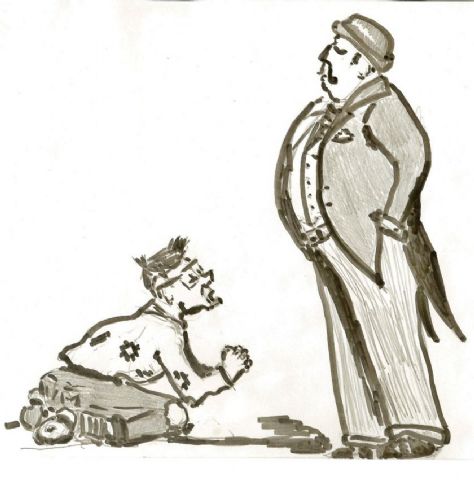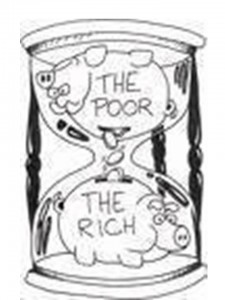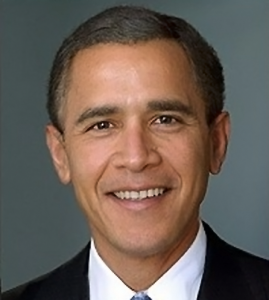by OcJim
I am of a generation blessed with opportunities provided by a society committed to the common good with reasonable leaders able to relate to the need for investment in people. My education through graduate school was quite affordable. A state legislature was farsighted enough to provide merit-based and need-based scholarships, investing in its future and that of citizens. There was no necessity for student loans: part time jobs and family helped sustain my goal of a degree. Medical costs were reasonable and health insurance came with even clerical jobs held by my wife. This is when unions led the charge for good pay and great benefits.
My father was working class with good skills, but was an alcoholic, barely functioning. His pay afforded necessities, working both union and non-union jobs. As a Catholic, he accepted church doctrine of natural birth control and was blessed with 6 daughters and two sons. Perhaps part of the blame for his condition can be ascribed to the burdens of many children. I don’t know.
Sadly this era of unions and opportunity is gone. Over 47 million Americans remain at or below the poverty line of about $11,000 for an individual and $23,000 for a family of four, which is at best a low, somewhat arbitrary number. That makes the poverty rate over 15% now. Unfortunately additional millions of men, women and children in America work at low-paying jobs that provide few or no benefits, putting them at risk of falling into devastating debt.
Still cuts targeting the poor continue, even among some Democrats. In effect, a current version of the Senate Farm Bill adds further suffering to the hungry by cutting the Supplemental Nutrition Assistance Program (SNAP) benefits by $4.5 billion, affecting seniors and disabled individuals living in subsidized housing.
The upcoming elections could augment the fractious side of leadership which spews anti-tax, anti-government rhetoric, want to privatize Social Security for Wall Street enrichment, and often blame the poor for their own misery. Such elections will determine if victims of poverty will multiply. The Paul Ryan budget of infamy stands loaded to target social programs of the poor even more, while destroying a pillar of senior life support, Medicare, this while blessing the rich with more booty.
Give us more Republicans in leadership with their supply-side solutions, and poverty is bound to creep into the diminishing middle class. We will see poverty levels not seen since the Great Depression. But a recent poll by the Pew Research Center shows indifference, if not animosity toward the poor: a majority of Americans oppose more government spending to help the poor.
Let’s survey a swath of our country and see the current misery of the poor, a condition that more harsh leadership and a continued indifference from the people will surely increase.
Brandi Wells is a single mom in West Virginia, struggling to find a job and care for her 10-month-old son. “I didn’t realize that it could go so bad so fast,” she said. One of the poorest towns in the Midwest, Pembroke, Illinois, is where Keith Bobo is trying to launch revitalization programs. He likens its conditions to a Third World country.
Mississippi, with a black infant mortality rate of 13.8, higher than Africa’s Botswana, is usually associated with poverty. Like many American communities, Clarksdale, Mississippi has great divides. In one part of town are old stately homes in the historic district, housing the very rich. In another part are the desperate poor, who languish in sticks of houses and send their children to underfunded, bare-bones schools.
After a life of continual labor in sharecropping and trucking, Eighty-eight year-old Amos Harper lives in the latter area propped up by less than $8000 a year of Social Security income, scant income from odd jobs, and 49 cents per pound pickings from cans he collects. Even in this small town he is a poverty candidate.
At a food pantry in a Chicago suburb, Kris Fallon, a 38-year-old mother of two, breaks into tears when speaking of her family’s plight. Both Kris and her husband have been out of work for nearly two years. Their house and car are gone, and so is their foothold in the middle class, and often their self-esteem.
Tim Cordova lives in a homeless shelter in New Mexico with his family, no longer able to sustain a tenuous life sleeping in their Ford Focus. He was laid off from his job as a manager of a McDonalds.
In Albuquerque, resident Megan Roberts’ family was kicked off Medicaid when her husband received a small hourly raise. While temporarily living in California’s Central Valley, her appendix burst, leaving them bankrupt with $100,000 in medical bills. Later, her cancer left her family facing an additional $186,000 in debt they couldn’t pay. Though we are still 2 years away from full implementation of Obama’s health care relief for the poor, that coverage is jeopardized by relentless Republican attacks and by threatened opposition of a conservative Supreme Court.
Our society must ask itself if indifference to the situation of the poor stems from the growing polarization of the last two decades, the mean-spiritedness and the vitriol exhibited by the Republicans and their base during the just-ended primary, or whether we as individuals think we can never sink to poverty ourselves.
The growing gap between rich and poor that we are seeing could very well push us out of our comfort and into the growing ranks of the poor. Keep in mind that relative poverty, the gap between the 15th percentile (those in poverty) and the 50th percentile is getting narrower in terms of income, as the rich confiscate more income from the lower 50% income group.
Remember what Brandi Wells from West Virginia said, “I didn’t realize that it could go so bad so fast.”
—————————————————–
http://www.youtube.com/watch?feature=player_embedded&v=u7wU-1h8nvw#t=129s
——————————————————————————
Follow more from this author on Facebook here ——-> Common Good




